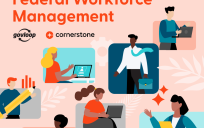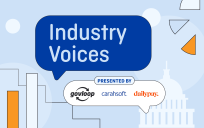A multigenerational workforce is the new norm. Four generations are working together for the first time, leading to varying levels of expectations – and this means that HR workers need to accommodate the different needs inherent to each generation. This requires balancing the desire to hire fresh eyes and maintaining the older workforce’s talent formed from years of experience.
During GovLoop’s recent online training, Modern Government HR: How Cloud is Changing Workforce Management Practices, Ross Tripp, the Director of Strategic Workforce Services in the Office of Management and Enterprise Services with the State of Oklahoma and Celeste O’Dea, Director of the Advanced Human Capital Management Program with Oracle spoke about the disconnect between HR departments and IT modernization.
O’Dea described millennials as “non-sticky” – in other words, they are mobile and constantly looking for more ways to contribute to their organization and community.
Additionally, these millennials are increasingly utilizing digital platforms including social media throughout the job hunt process. They are looking to HR departments to provide the same digital experience that they are used to out of the workspace.
But, how can government in these modern times take advantage of the growing digital needs by millennials while capturing all the wisdom baby boomers have to offer? O’Dea said that HR departments need to modernize their communication and outreach through the cloud so that potential hires can apply in an mobile, secure way.
To highlight the challenges modern government has, Tripp explained Oklahoma’s “quest for better technology or thoughts about going to the cloud in a state that averages 56 tornadoes per year.”
The state began transitioning in the early ‘50s from a heavily decentralized government to an emphasis on efficiency, transparency and streamlined services.
Early IT reflected the initial decentralized governance, which resulted in a large separation between business processes and technology modernization. As the dependence on technology increased, the state went through classification and compensation reform to create uniform job descriptions and pay bands for “classified” positions.
Additionally, Oklahoma adopted Peoplesoft, a company owned by Oracle that provides human resource management systems. This major step was met with enthusiasm across departments because it centralized HR and IT processes.
However, HR and IT were still disconnected to some extent. To remedy this, the Oklahoma Information Services Act was passed to create a combined Chief Information Officer and Secretary of Information Technology and Telecommunications position to assess existing plans for modern IT deployment. Following this milestone, five distinct agencies were consolidated to streamline HR regulation and IT functions in the state.
Moving forward, Tripp explains that Oklahoma is looking for new functionality that will come with the cloud environment. After years of attempting to fill everyone’s needs through an excessively customized HRIS system, they are hoping to see cost savings and increase efficiency through the cloud.
To view the entire online training, check it out on demand here.






Leave a Reply
You must be logged in to post a comment.